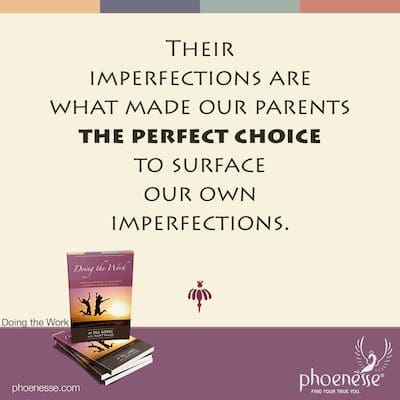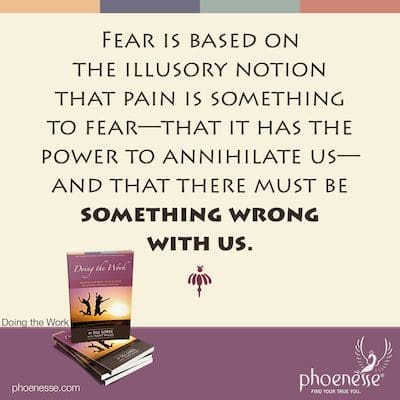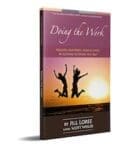I Spy with My Little Eye

So how did we become wired for always wanting to be right? Why do we run and hide? And why is this behavior so blessed hard to give up?
Sorting out answers to these important questions requires we first get to know the Little-L portion of the Lower Self. This is that inner child whose motto in life is “I can’t”; this is the immature, split-off parts of ourselves we need to call back. So childhood is where we must go in search of understanding.
The problem is not that our parents weren’t perfect. More to the point, their imperfections are what made our parents the perfect choice to surface our own imperfections. For what’s the point in coming to this sphere if we’re not going to see our work? We could just as well have stayed put.
Enter: Mom and Dad, the perfect people to help us surface our split and unearth our faults. Note, if our life experience didn’t involve the traditional mom-and-dad family, we somehow still got the setup our soul most needed. Building on this premise that our set of parents, or life situation, have been carefully hand-selected for their ability to zoom in on our pre-existing wounds, we are going to experience pain. No two ways about it, every child will come face-to-face with a life situation that causes their particular soul to feel some kind of acute pain.
If the pain we experienced during childhood was generally not so intense, hats off to us for work we previously attended to. We may get to enjoy a less rocky relationship with our parents and siblings than some others. But if it was, to our way of seeing things, more heavily intense, we didn’t stick to our task in previous incarnations. Now we must pay the piper.
Whatever we got, it was an exact match for what our soul needed at this point in our journey. And we agreed it’s what would serve us and our homeward-bound plans the best. (See more in Gems, Chapter 8: The Pain of Injustice and the Truth About Fairness.)
It may help to consider the way in which siblings often have markedly different responses to their childhood atmosphere. One child in a family may have found a particular aspect very disturbing while another felt that aspect left a relatively minor mark. It’s all related to the size and depth of our pre-existing soul dent.
For that’s what has precipitated the selection of the environment for this incarnation. Plus, over time, souls develop karma with each other. So we often travel through lifetime after lifetime sharing work with another soul, until we resolve the piece that has us hooked on our unresolved issues.

One of the universal plights we face as human beings is coming to grips with our hidden belief that we don’t matter. During the Fall, everything that was at one time positive got twisted into its inverse. And we lost our awareness that we are each special and loved aspects of the Oneness. That we’re an important aspect of the essence of God. Instead, we began to see ourselves as unlovable and not enough. So we ended up in childhood circumstances that supported our untrue convictions.
To feel unlovable and unloved creates such a deep pain and sense of humiliation for a child. And we will spend the rest of our lives running to avoid feeling this. It is our fear of this pain that fuels our defenses. Our fears will compound and morph until we are unable to walk around in the world without a sense something painful lurks in every shadow.
Fear, then, is one of the three primary faults we collectively must grapple with. It’s based on the illusory notion that pain is something to fear—that it has the power to annihilate us—and that there must be something wrong with us.
We mistakenly believe that we are broken, we’re not enough or we don’t matter. This is part of the I-am-less-than conclusion we draw as children. And it leads us into the second main fault, which is pride. Pride and the associated behavior that attempts to project an aura of I-am-better-than, is nothing more than a compensating reaction to the underlying belief I-am-less-than.

From this wrong conclusion, we launch into a life of comparing and competing. We’re perpetually trying to one-up others and prove to the world we do matter, after all, and we’re enough. This striving to be better is not the same as our desire to do our best or be our best. No, this version of striving is propelled by a false conclusion that we need to right a wrong.
Being stuck in such immature, childish thinking, we’re mired in the dualistic trap of a black-and-white reality. And in dualistic thinking, everything boils down to essentially a fight between life and death. So we are fighting here as if our lives depend on it.
But what we’re really fighting against is this illusion that somehow, we don’t measure up. Our work then is to die into this dark misconception and come out the other side into the light of truth. The truth is that the value of our true self has never been in question; we were the ones who didn’t believe in our own worth. This is the illusion we must die into. And it’s one in which we remain hopelessly entangled until we change our tack and start to fight our way out.
The third of the Big-Three Faults is self-will. This is our propensity for forcing and controlling, manipulating and maneuvering, or conversely digging in and denying, avoiding and refusing to budge. With self-will, we misguidedly use our will to do whatever we must do to get our way. For the immature inner child wants what it wants, when it wants it. So we avoid mature behaviors like patience, acceptance and letting go so God’s will can prevail.
All our other faults cascade from these three basic faults of fear, pride and self-will. (See more about faults in Spilling the Script and Bones, Chapter 12: Finding Out the Truth about Ourselves, Including Our Faults.) What’s more, these Three Musketeers always travel in a pack. Meaning, if we find one, we would be wise to search for the other two so we can surface the entire constellation of illusion. We must come to see our Lower Self in action and understand the conclusions on which it is operating before we can unwind our twisted behaviors and decide to make a different choice.
Our goal, then, from the Little-L Lower Self’s perspective, is to escape feeling pain and facing our fears. We will freeze, fight or flee in our efforts to avoid feeling worthless, which is what we secretly fear is the truth about who we are. If we didn’t believe in our unconscious mind that this were true, none of these ineffective defenses and reactions would be necessary. We would be able to see there must be a better way, and we would give up the ghost and change. Right?
There’s just one problem: the Big-L Lower Self.
In Jill’s Experience
I’ve been doing this work for a couple decades, as has Scott, so it’s humbling to admit that in our first six months together, my young inner self did a runner no fewer than half a dozen times. It was a bit exhausting for both of us. One minute we’re fine, the next, where’s Jill? And seldom was it over anything all that big.
But that’s the thing about our primary relationships. They drop into the slot of our original wounding and rub raw anything we haven’t already healed. The progress I can claim is that rather than blaming Scott for making me hurt, or dropping into a hole of victimhood where I believe he is responsible for my pain, I take self-responsibility for doing my own work.
That said, there is something incredibly healing about letting Scott hold me while I sob it out. Even when he’s the one who did the thing that triggered my Emotional Reaction. But at this point, both of us know the way this goes. Both of us realize that something happened, and we’ll want to sort that out at some point. In the moment, however, what matters is that this young hurting part gets some attention. We can welcome her and make space for her to let go of the age-old pain she’s holding, knowing, 1) this isn’t all of me, 2) I’m currently caught in illusion, and 3) we can come out the other side of this together.
As the Pathwork Guide tells us, over and over, any time we’re in disharmony, we’re not in truth. And the truth is, we’re all one. Scott and I really are on the same team, each working equally hard to clear out old debris so we can be in harmony together. For that to happen, though, we both must be willing to do our own work.
In Scott’s Experience
The biggest challenge I’ve experienced working with the Little-L Lower Self is its tendency to go into a trance. Take the tendency to hide in plain sight, and go back to the story of skiing at Lake Tahoe. If I could have remained aware of this habituation, and noticed immediately that part of me was hiding, the interaction between Jill and me would likely have been very different. We could have both stayed present with each other. But that is the nature of these things.
When I first learned about this process a decade ago, it explained so much. I had a teacher at the time who was focused on this stage of the work. The Little-L Lower Self lives in the past, she said, where it got stuck. The split-off consciousness there has its own beliefs, will, feelings and sense of time. It just spins in an endless pattern, perhaps something like “it’s not safe, therefore I will hide,” and stays just below our conscious awareness.
When it is activated, it isn’t aware enough to know we’ve gotten stuck in an endless loop. My teacher showed me the first step is always to break the trance. For if I’m stuck in the trance, I will continue to act from that place. That’s what happened in Tahoe. I simply wasn’t aware that part of me had begun hiding behind a mask.
It’s really helpful to have a partner who can say, “I notice something is off. What’s going on here?” Just that can sometimes break the trance, which enables me to bring a higher functioning to the situation.
It can be disheartening to keep repeating this interaction again and again. But each time I bring consciousness to it, each time I listen to that little boy in me that felt lost all those years ago, I heal just a little more. The power of the trance drops just a little bit. I’m able to exit more easily, and to stay just a little bit more present to Jill. Eventually those little bits add up to a lot.
Next Chapter
Return to Doing the Work Contents


